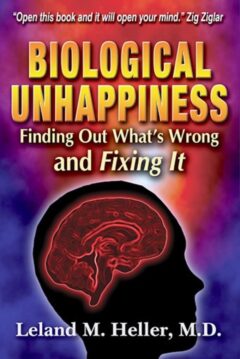Okeechobee Family Practice, P. A.
1713 US Hwy 441 N, Suite E
Okeechobee, FL 34972
Dr. Steve Hyman
Director, NIMH
10 Center Drive
Bethesda, MD 20892
Re: BPD and co-morbidity study
Dear Dr. Hyman,
I’m a Family Physician who has taken a great interest in treating borderlines. My first book on the BPD “Life at the Border – Understanding and Recovering from the Borderline Personality Disorder,” is a reference book at NIMH and was placed on their recommended reading list in 1992.
In 1988, I got interested in treating the BPD when I perceived it to be a medical problem and the psychiatrists I referred to refused to treat my patients. I’ve treated thousands of borderlines – diagnosed by strict DSM criteria – and they come from all over the country, sometimes abroad. The numbers are staggering. Unfortunately most academic and administrative people see character disordered people who also have the BPD, and have incorrectly classified the BPD as a character disorder. It’s not. A high percentage are honest, well meaning individuals who are suffering from their neurological problems. Most individuals diagnosed with bipolar have the BPD instead – they’ve never had mania or hypomania, but are diagnosed with bipolar anyway because of the mood lability. Borderlines participate in their self-destructive behaviors because they feel terrible and the behaviors stop the pain, bipolars because they feel great and invincible. It’s a huge difference.
I’m very well read on the subject. I’ve done two studies, one comparing sertraline to fluoxetine on SSRI target symptoms that I’ve observed, run a free weekly support group for patients and their families for 3.5 years, run three 6 week intensive outpatient treatment programs with outstanding results, given hundreds of talks including for physicians and mental health providers, done media and legal work, and I’ve answered nearly a thousand “ask the doctor” questions for a BPD website, along with entering scientific information such as Medline searches, literature showing medication effectiveness, medical articles I’ve written, and the fluoxetine/sertraline study. I’m scheduled to speak in Chicago this November at the APHA meeting. I’ve written a second book, “Biological Unhappiness” that was just released.
I believe the BPD is caused by damage to the brain’s “cornered animal” response. There is considerable information that limbic system dysfunction is the cause and individuals are extremely responsive to the right combination of medications. There’s more data that the BPD is a medical problem than there is for bipolar!
The keys I’ve found to successful BPD treatment are diagnosing and treating all the comorbidities – such as the GAD and attention deficit disorder, and having a formal medication plan for stress.
A telephone study in Iowa revealed 4% of the population admitted to having BPD criteria! That means the numbers are higher than that since a high percentage of those with the BPD wouldn’t admit those things to a stranger over the phone.
This is an important study you are about to do. Our society is in trouble – as the facts below show. The BPD is a major cause and epidemiology is badly needed. I strongly encourage you to add the BPD to your list of diagnoses researched. Thank you.
Sincerely yours,
Leland M. Heller, M.D.
According to the 1997 Youth Risk Behavior Surveillance System (YRBSS – a comprehensive survey of high school student health behaviors which includes data for the nation, 36 states and territories and 17 cities):
10% of our youth reported carrying guns
27% of young people frequently smoke cigarettes
21% are having sexual intercourse before age 13
36% rode in a car with a driver who had been drinking alcohol
Over 7% attempted suicide in the previous year
Over 50% had at least one alcoholic drink in the last month
33.4% had five or more drinks of alcohol on at least one occasion during the past month
26.2% used marijuana during the past month
3.3% used cocaine during the past month
16% used inhalants during their lifetime
73% of all deaths among school-age youth and young adults result from four causes:a) motor vehicle crashes
b) unintentional injuries
c) homicide
d) suicide

Comments are closed.